Final week I used to be in northern Italy to go to the manufacturing unit of two biking business icons, and to check experience two coming-soon highway bikes. Whereas I used to be there on a cool, wet autumn afternoon, I had the possibility to go searching contained in the Ghisallo Biking Museum. Inside are lots of of bikes from the earliest days on two wheels as much as right now – a few of which clearly exhibit pioneering applied sciences.
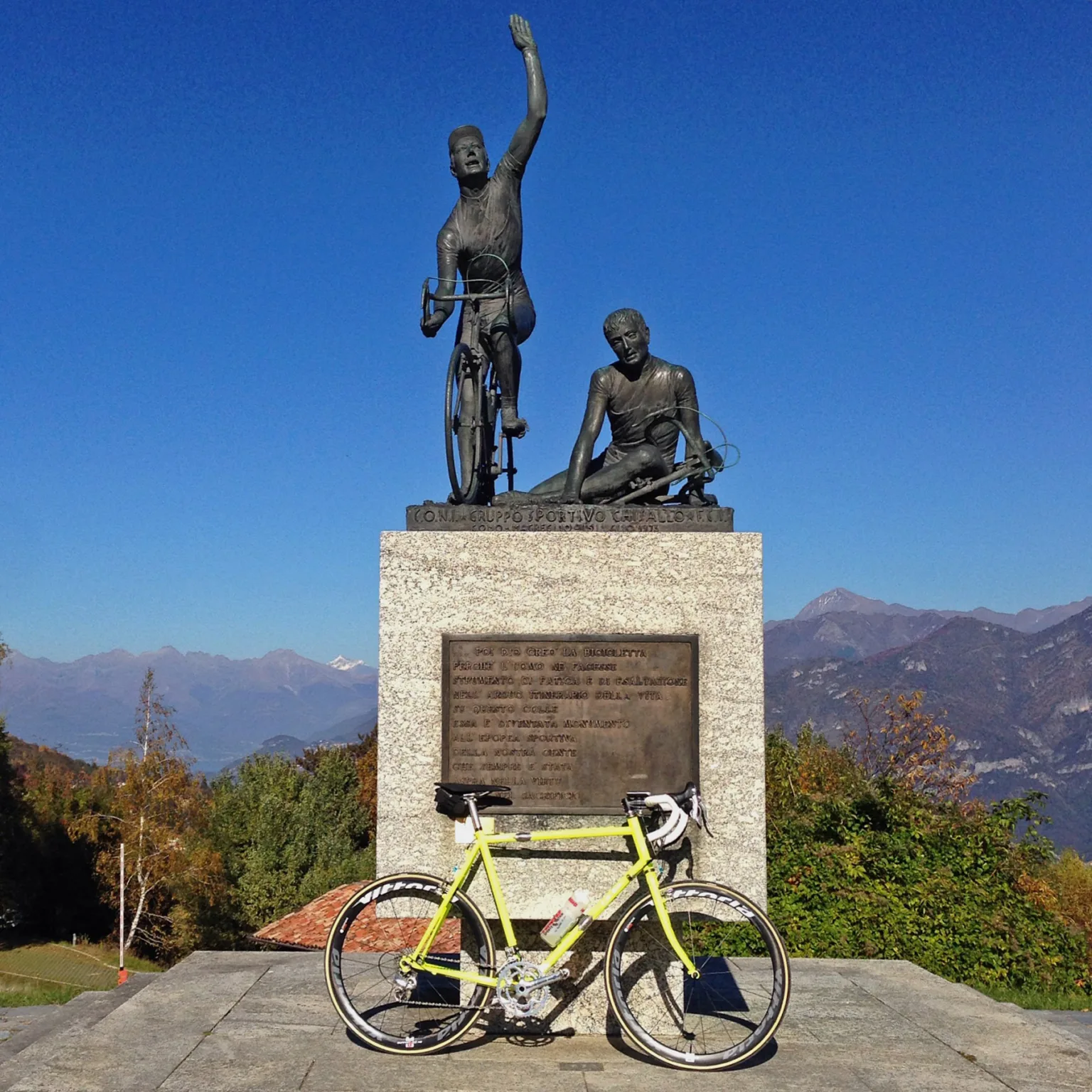



It wasn’t my first time there. I’d ridden up this hill twice earlier than in a lot sunnier and hotter climate. However seeing as how the museum was based in 2006 by Fiorenzo Magni – the unique professional bicycle owner to earn the title Lion of Flanders for his consecutive 1949-1951 Ronde van Vlaanderen wins in chilly and moist climate (earlier than Johan Museeuw half a century later) – I believed it becoming to dig deeper, previous his rain-soaked bust exterior.
OK, so what’s contained in the museum?
1950 Aero Bike prototype predicted the longer term


So let’s begin with an aero bike prototype, since aerodynamics are all the craze today.
However this one, despite the fact that it’s 75 years outdated, doesn’t look all that totally different than what we see right now. Created by an Italian engineer named Cristoforo Gazzoni in 1950 at a time when each bike was fabricated from lugged metal, he needed to suppose exterior the field.
He knew what he needed, and to get aerodynamic shapes, Gazzoni carved light-weight balsa wooden cowls that match over nearly each tube on the bike, in addition to the bar, stem & cranks. Then he wrapped his creation like a mummy in material tape to clean airflow over the whole bike.




The metal cottered cranks not solely received aero wooden arms, but in addition a pair of aerodynamic covers that sandwiched the chainring.
For the wheels, they caught with low-profile metal tubular rims and 36 spokes, however Gazzoni stretched canvas covers over high, with sewn-in zippers to entry their valves.


Even the bar and stem received the balsa wooden aero remedy. And when he wrapped all of it in material tape, Gazzoni successfully created the world’s first aerodynamic 1-piece built-in cockpit design.


I imply, come on, that clearly appears like loads of present 1-piece aero cockpits, proper? Nicely, not less than with out the chunks of wooden peeking out. It even has an built-in aero higher headset cowl.
Campagnolo did wi-fi 1x all-road derailleurs 75 years in the past!


Onto the following of the Ghisallo Museum visionaries is that this early Campagnolo derailleur design. It’s 1x and no wires to fret about routing, and even batteries to maintain charged.
As an alternative, this Campagnolo Paris-Roubaix derailleur, patented in 1948/49, makes use of a single lever to loosen the rear axle AND transfer a small cage in & out to information your chain onto the following cog. A posh association of inside and exterior planetary gears and ratchet make all of it work.


The trick is, you could again pedal to shift, however not so onerous that you simply by chance eject the rear wheel out of the forward-facing dropouts. Plus, it could possibly solely shift a really slim vary of gears, for the reason that axle needed to slide ahead a bit greater than 3mm for every further tooth added out again, additionally messing with the alignment of brake footwear in your rim.
Nevertheless it clearly labored. As a result of on the coronary heart of the Ghisallo Museum is that is the Bianchi highway bike that Fausto Coppi raced to win Paris-Roubaix in 1950.
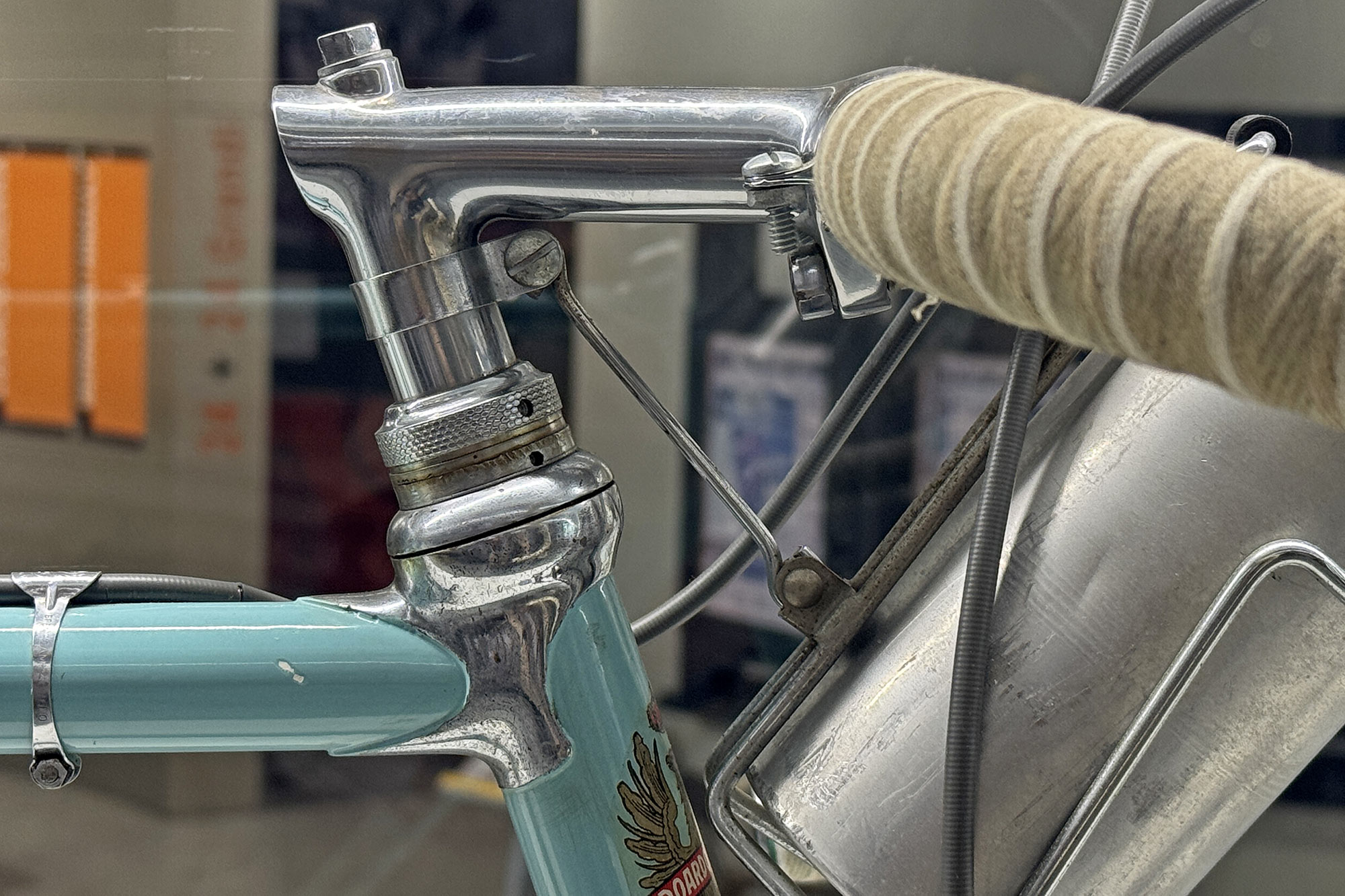

Coppi’s Roubaix bike additionally has loads of different trick particulars, together with this water bottle cage with a strut hooked up to the stem for stability that might give fashionable bikepackers concepts.
Early derailleur ideas have been wild!


The Ghisallo Museum has an entire swath of bikes chronicling the appearance of gears on (usually gravel, on the time) highway racing bikes. The complicated single lever Campy setup on Coppi’s bike was a response to the less complicated two levers of its earlier era.




With this one, the rider loosened the Campagnolo quick-release with the higher lever. Then, they used the decrease lever to information the chain back-and-forth onto 3-5 totally different cogs – once more whereas backpedaling. Then, you simply clamped the highest one tight once more, driving away with the miracle of a number of gears (albeit carefully spaced).
Simple-peasy.
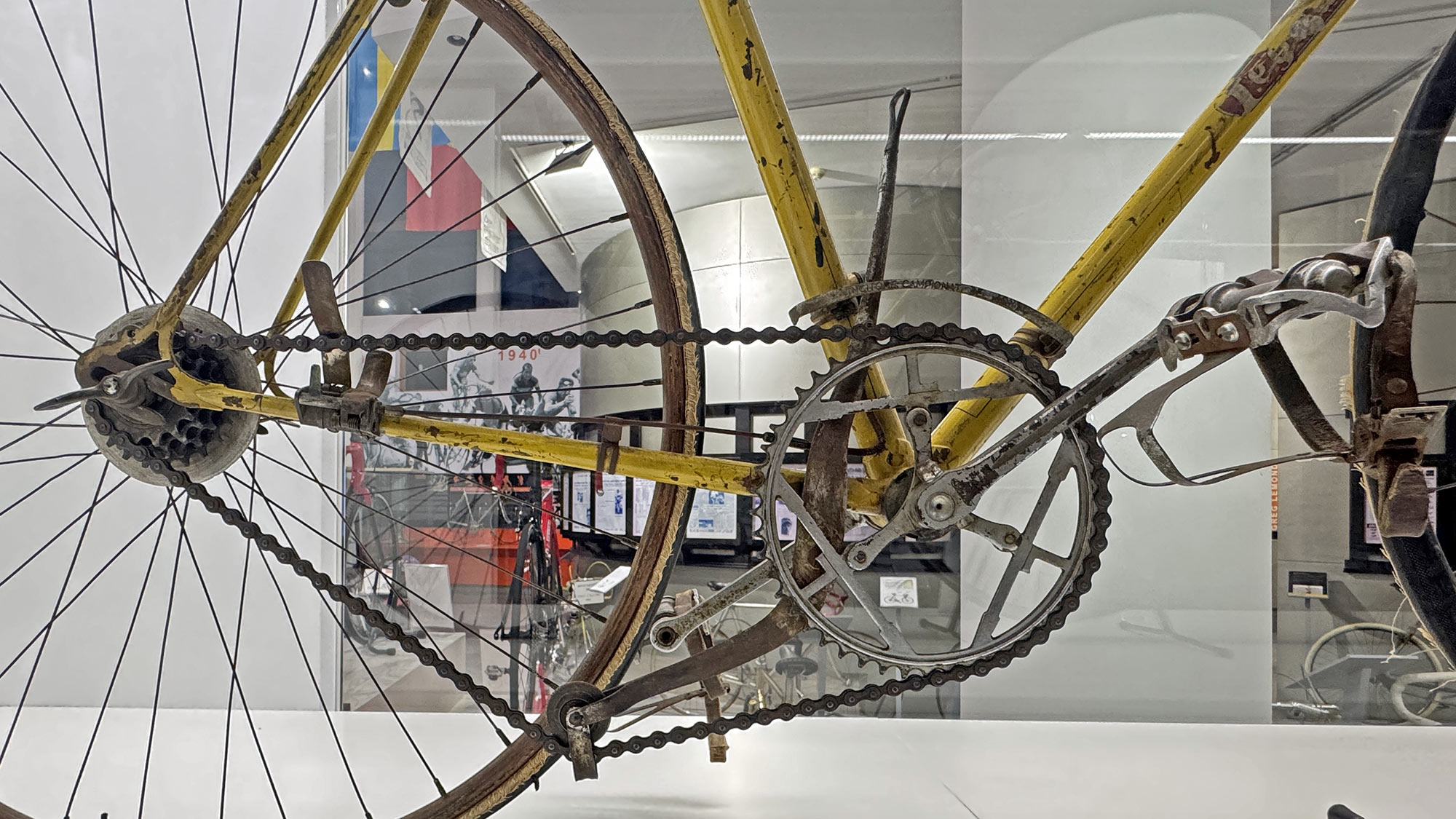

Campy actually wasn’t the one sport on the town for the early days of wacky derailleurs. Greater than a decade earlier, this 1938 Tour de France successful bike of Gino Bartali was fitted with the third era of Vittoria’s Margherita derailleur / shifting system. This one didn’t require disconnecting the rear wheel whereas driving. It nonetheless used huge wing nuts for tool-free tire adjustments. However quite it used a giant chain tensioner operated by a mid-bike shift lever. Push the lever ahead to launch stress. Twist the pinnacle to push the chain side-to-side with flaps hooked up to the pinnacle through a protracted versatile shaft. Then, lock stress again to experience ahead.
Sure, this one additionally required backpedaling to shift. So be grateful that we shift whereas pedaling ahead today.
Biking Historical past from 1791 to At present
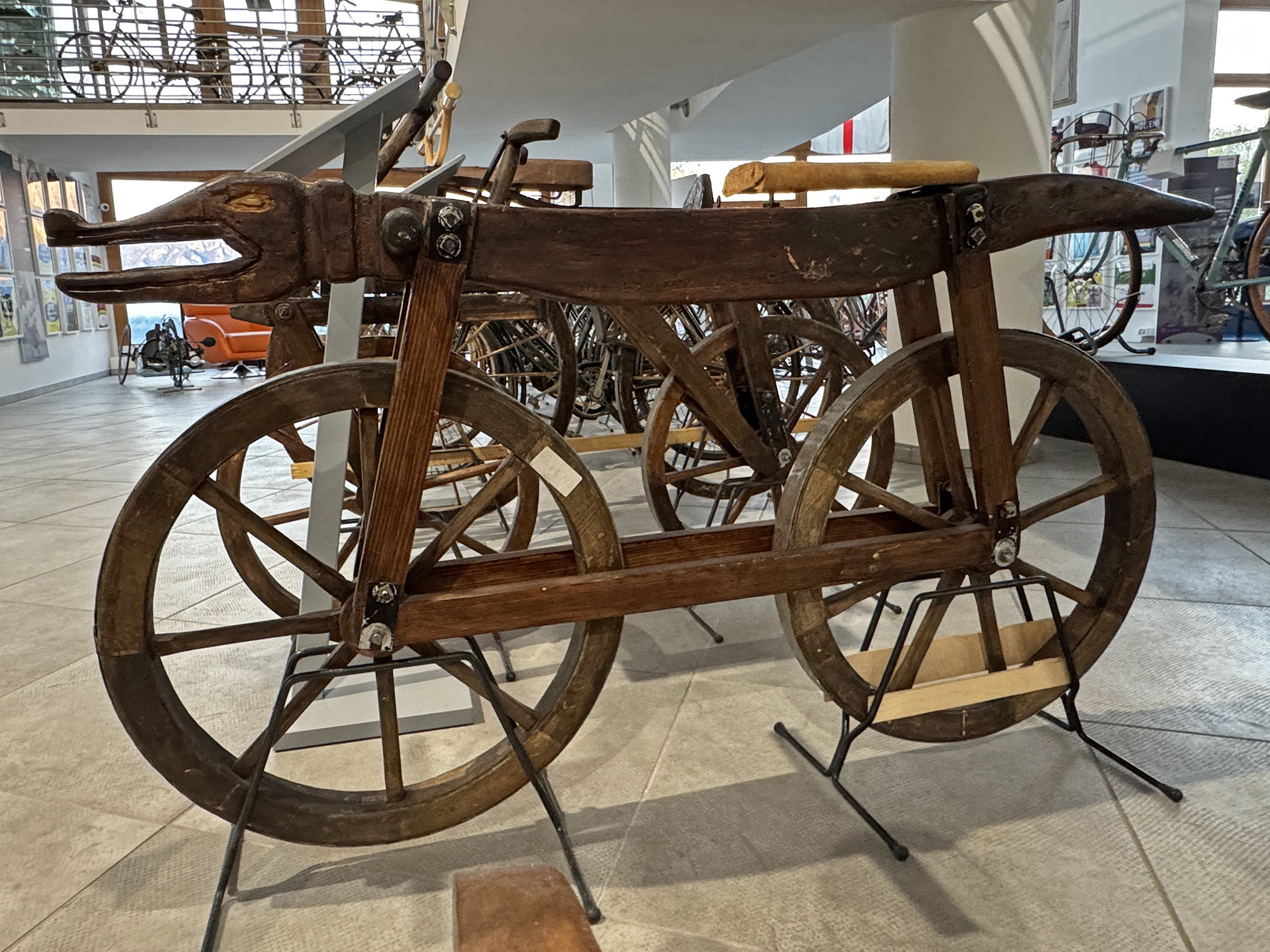

The gathering of the Ghisallo Museum spans from absolutely the origins of 2-wheeled biking up till the fashionable day. There’s lots to see. And fellow bike nerds like myself might spend hours poring over the small print for the extremely cheap 6€ entrance charge.
Take as an example, this recreation of the Celerifere from 1791. A precursor to precise bikes, it was actually simply two picket wheels linked with an animal on high to scoot round on.


Not solely are you able to see a full-scale velocipede duplicate of their ‘Evolution of the Leisure Bicycle’ part, the Ghisallo Museum present store really has mini replicas of the duplicate that you may take dwelling, too.


It’s not all outdated bikes, although. The Ghisallo Museum has a long-standing relationship, established as its founder Magni was a mentor to Ernesto Colnago, who labored as a mechanic for the 3x Giro d’Italia winner.
That continues right now, with particular Giro, Tour, and World Championship-winning editions of Tadej Pogačar’s bikes.
Unrivalled jersey collections
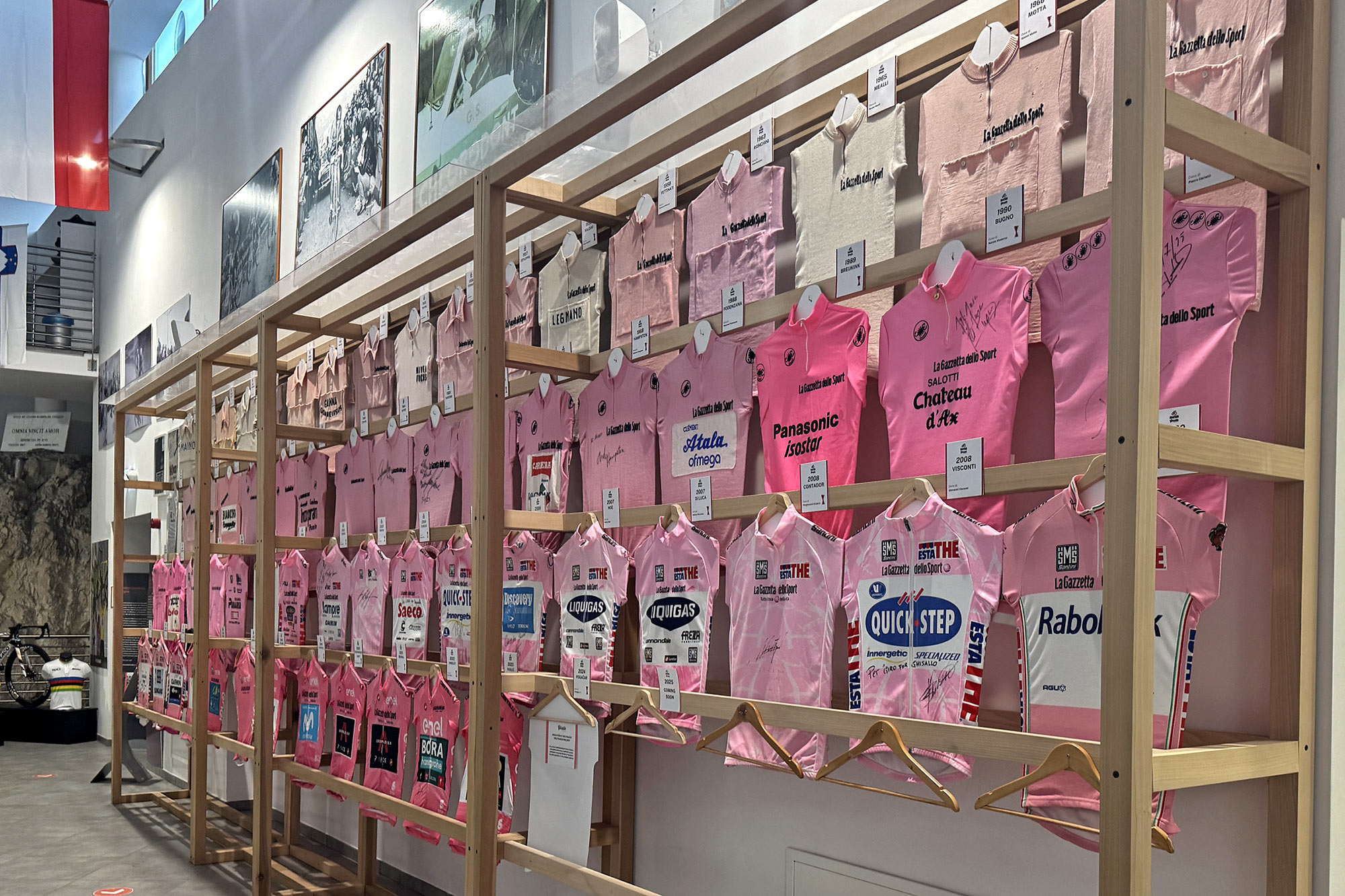

Past Pogačar’s current jersyes, the Ghisallo Museum additionally has the most important assortment of Giro d’Italia winners’ jerseys. All donated by professional cyclists, group sponsors, or collector followers, the museum remains to be working to get an genuine jersey for each version of the Italian Grand Tour because it began in 1909.


It’s not simply Giro jerseys both. They proceed to gather iconic skilled group jerseys monitoring the historical past of bicycle racing.
Ghisallo Museum’s endless biking assortment
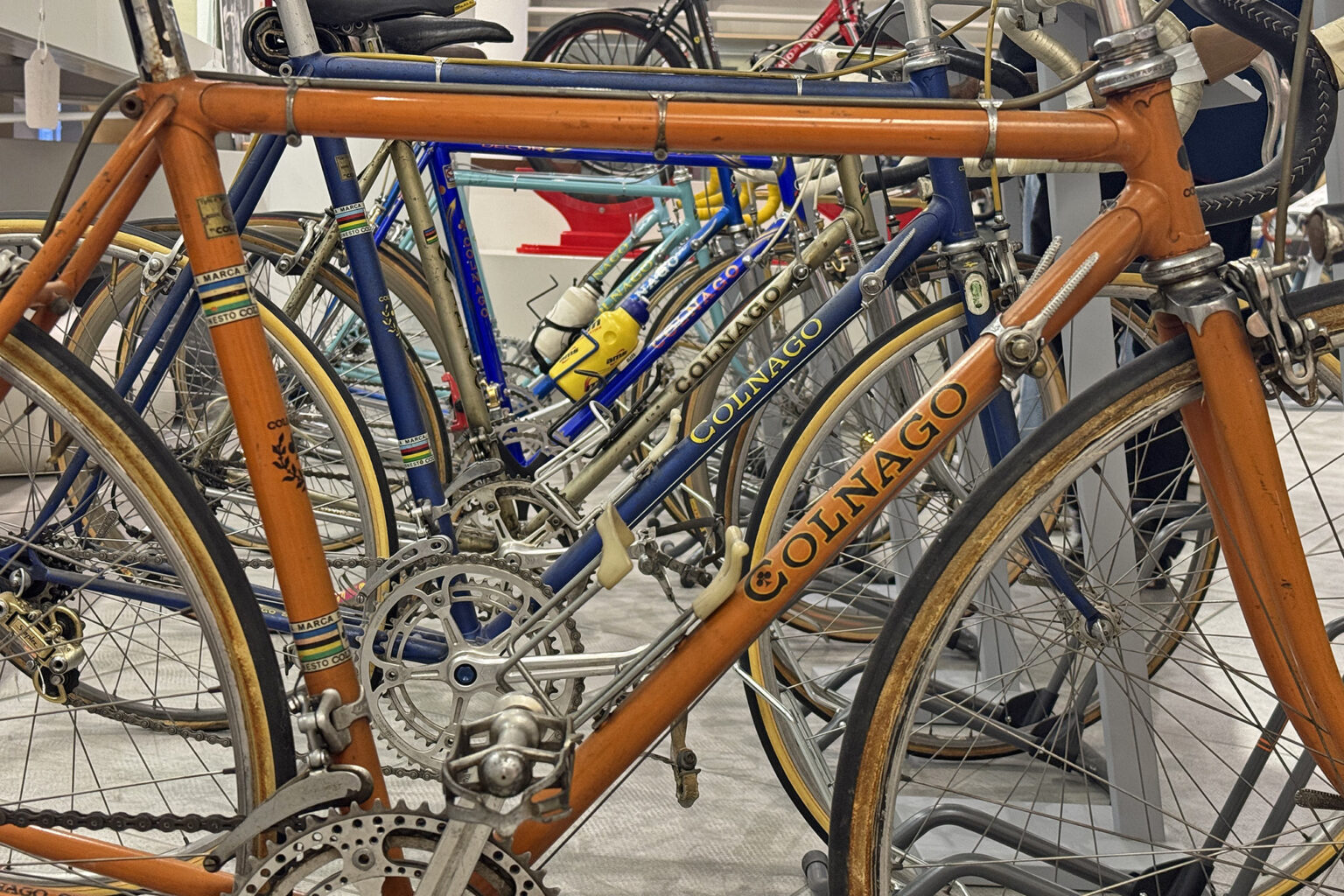



The Ghisallo Museum shows round 120-140 bikes at a time. However like many collections, there’s much more within the archives.
There are many traditional lugged metal Colnagos on show. And even a wholesome dose of drillium in the event you look carefully.
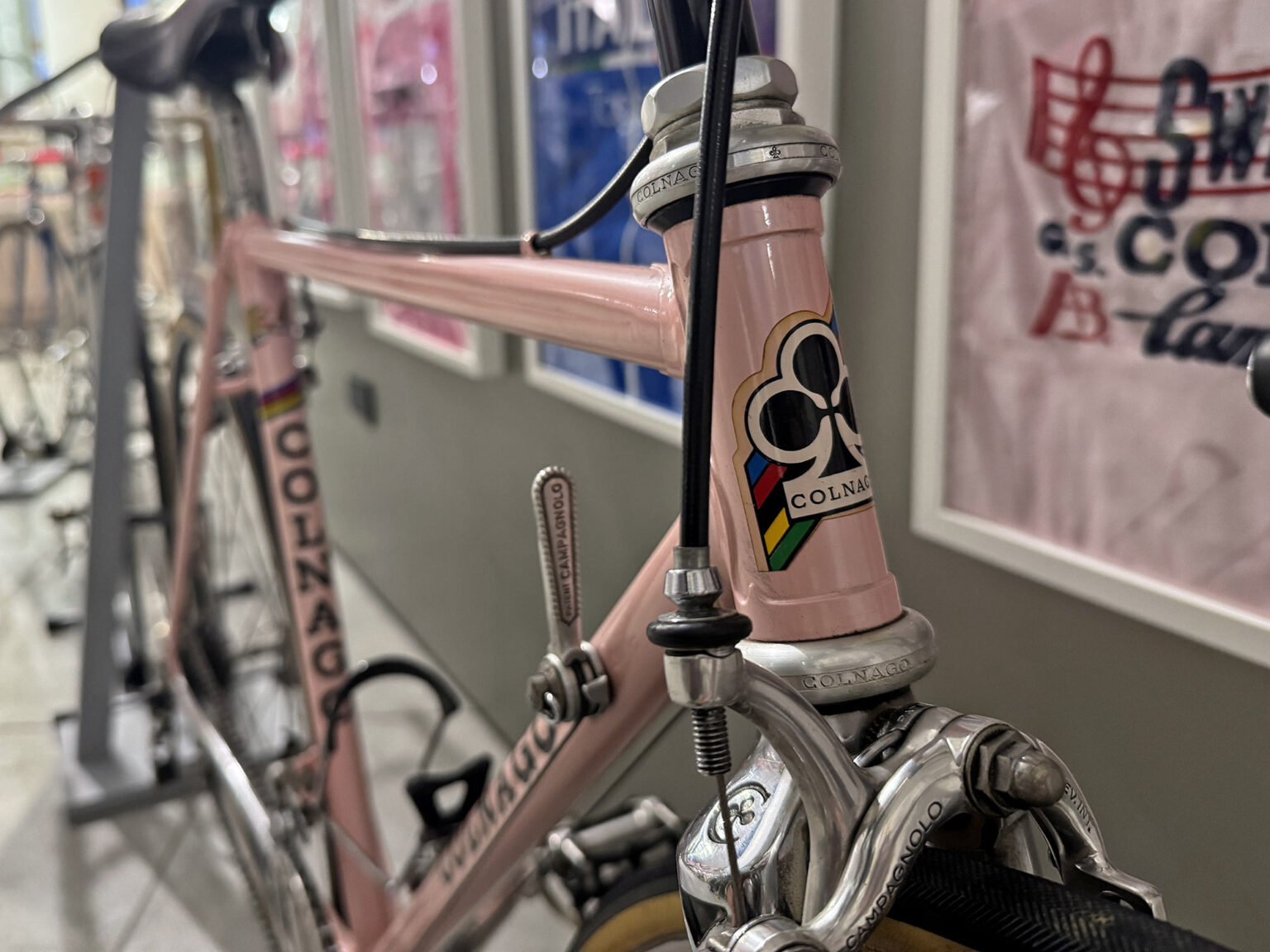





There have been tons of biking improvements between the Nineteen Eighties and early 2000s, so I discovered loads of bikes of these eras to nerd out on, too.
Like this Candy ‘n Low pink metal Colnago New Mexico bike of feminine professional Nadia Sambruni with Campagnolo Tremendous Report and ‘light-weight’ aluminum wheels. Or this aluminum Staff Telekom Pinarello that Jan Ullrich rode to a 2nd place to Marco Pantani within the 1998 Tour de France, this one with Campagnolo Report Titanium 9-speed and built-in Ergopower shifters. Or nearly into the fashionable age with the 2003 Giro d’Italia-winning Cannondale CAAD7 of Gilberto Simoni with 10sp Report Carbon, alloy spoke Mavic wheels, and a Cinelli RAM (Highway Aero Monocoque) bar+stem combo, the primary 1-piece carbon built-in cockpit greater than 20 years in the past.
How shortly issues modified
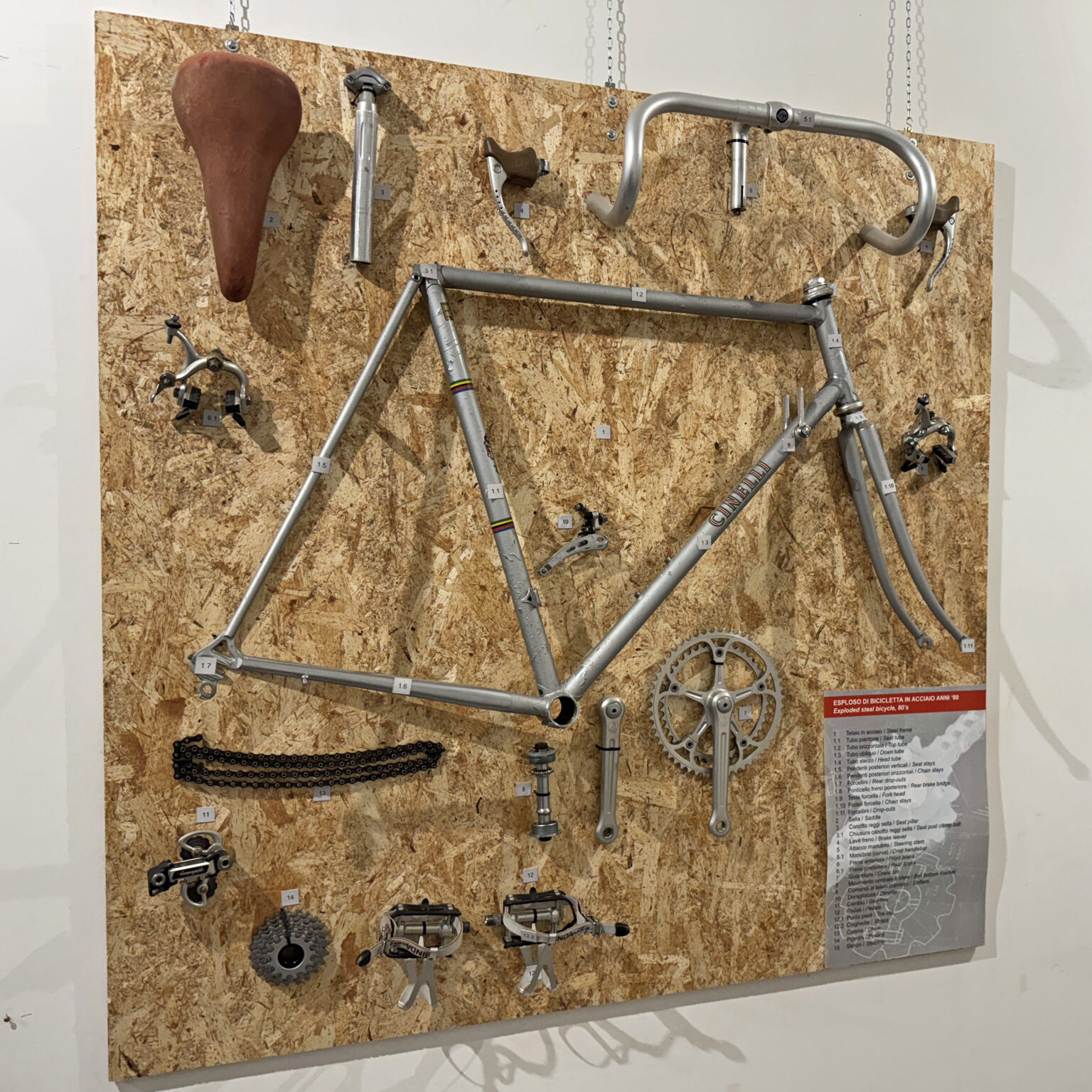

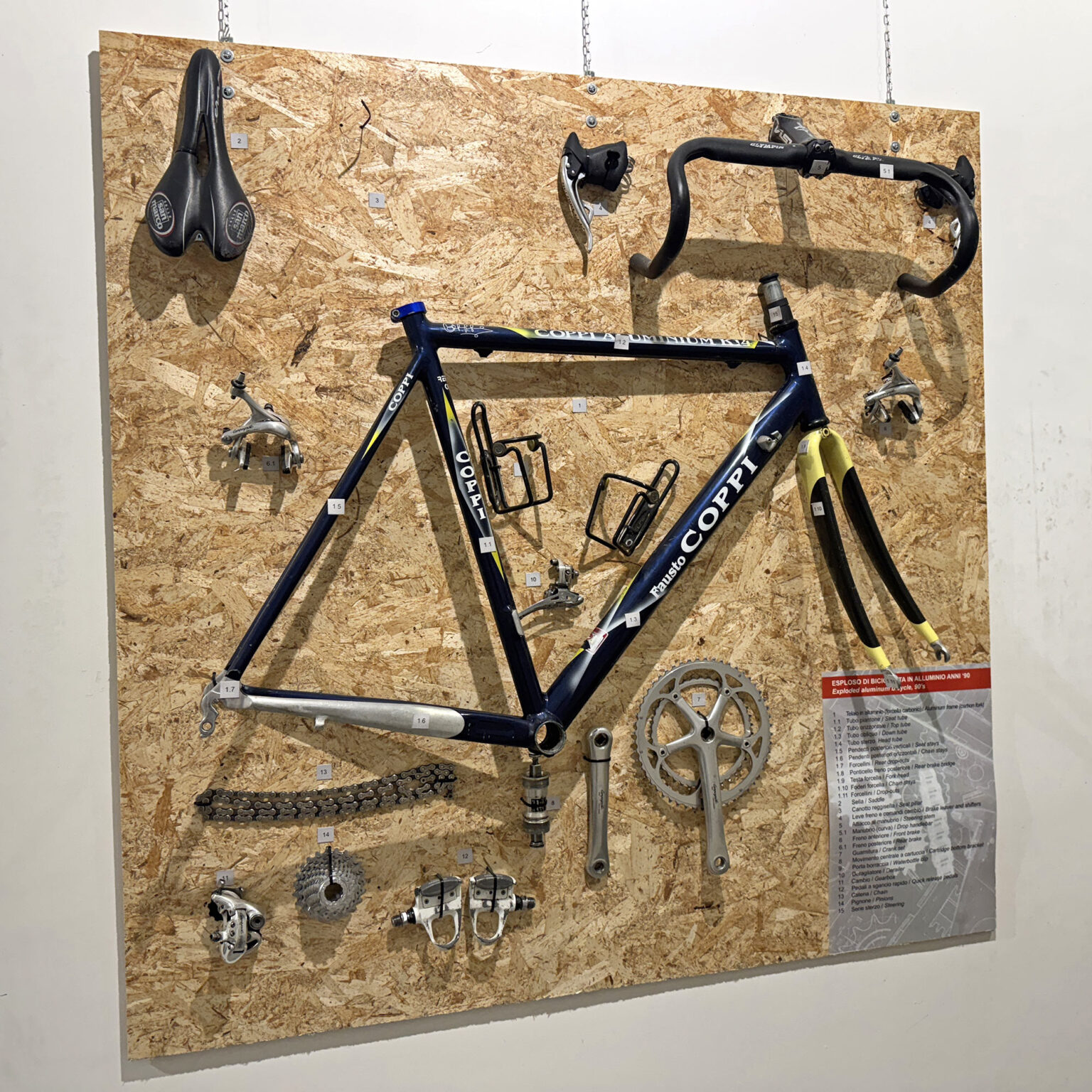

Tucked in a facet corridor of the Ghisallo Museum, I particularly appreciated two exploded bike shows that highlighted how a lot had modified from the standard Nineteen Eighties to Nineties race bikes.
Lugged metal to welded aluminum. Downtube shifters to built-in brake & shift levers. Freewheels to freehubs with cassettes. Toe clips to clipless. Threaded metal forks to threadless headsets & carbon forks. Easy curved bars to ergo bends, aero shapes & inside routing. Basic 1-piece leather-based saddles to fashionable ergonomic shapes, plastic shells & foam padding.
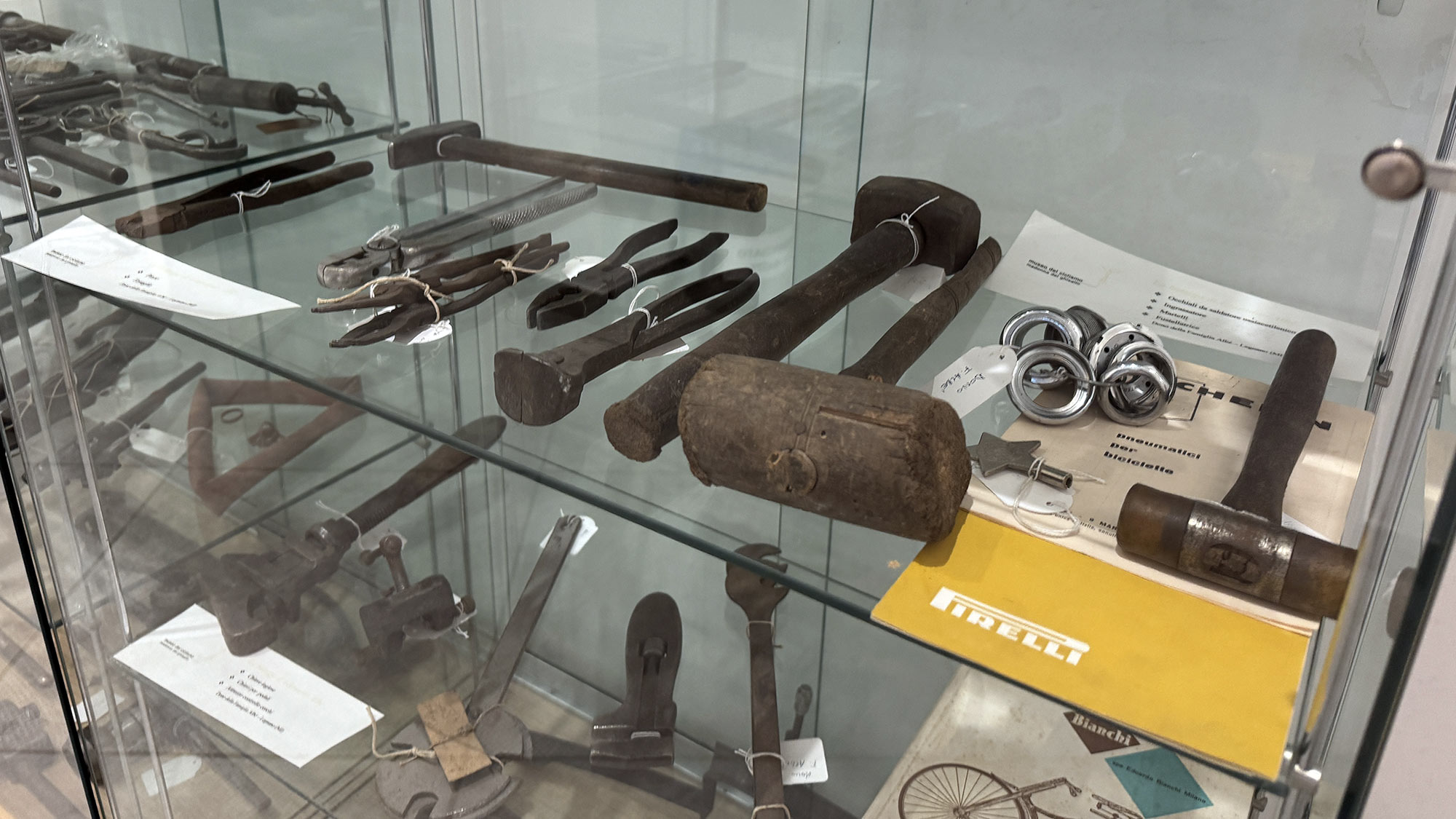

However some issues keep the identical.
I like to see purpose-built outdated instruments. However simply as a lot, I admire how vital a hammer has at all times been to engaged on bicycles For some jobs, nothing beats a bit percussive upkeep.




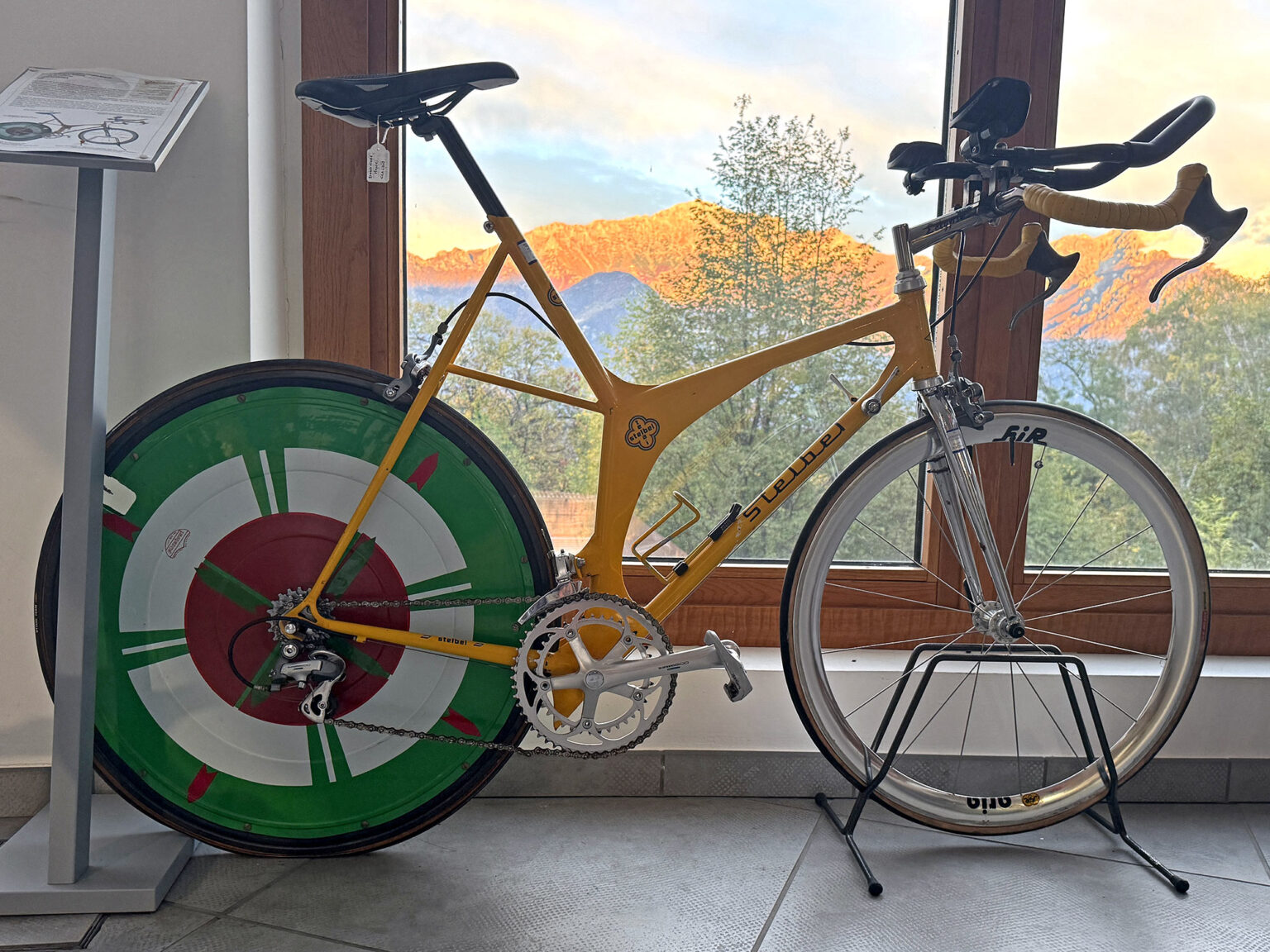

That is solely actually a glimpse of the treasure trove contained in the Ghisallo Museum. Whether or not you need to observe biking historical past, nerd out like me on a few of the esoteric particulars, or simply ogle some oddities, Ghisallo has you coated.
Experience to the museum


If there’s anywhere you need to experience a motorbike to for the perfect expertise, it’s the Ghisallo Biking Museum. It sits in a cross, up a scenic, twisting climb that rises above Lake Como in northern Italy. It’s not a simple pedal per se, however there are many choices to make it more durable or a bit bit simpler if you would like. Then, you’re rewarded with the enduring chapel devoted to the patron saint of cyclists, the enthralling museum, and naturally, a pleasant little cafe subsequent door.
I used to be there to check experience a brand new, made-in-Italy highway bike – coming quickly. However apparently, you may even drive there and borrow (lease?) a motorbike straight from the museum to absorb the surroundings. Learn the museum’s Experience web page to be taught extra.
MuseoDelGhisallo.it/en



















